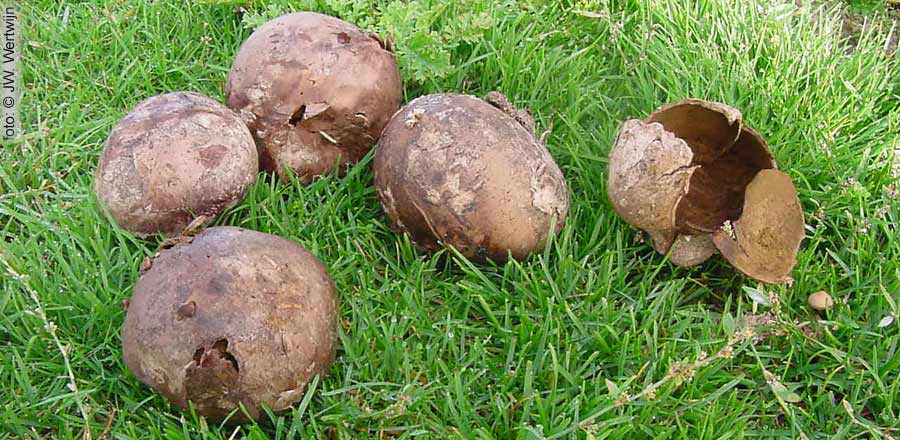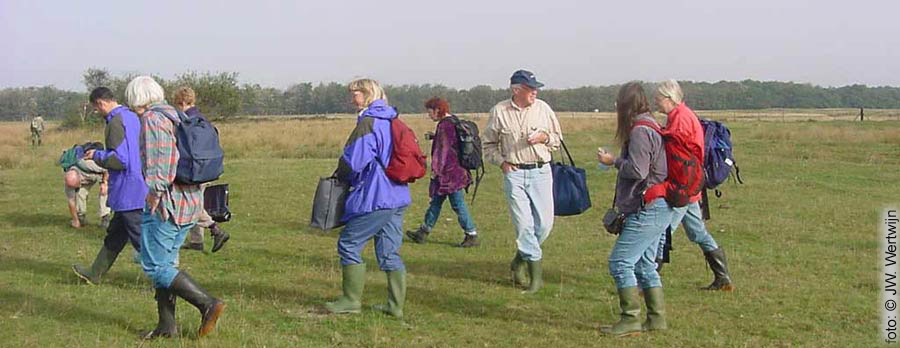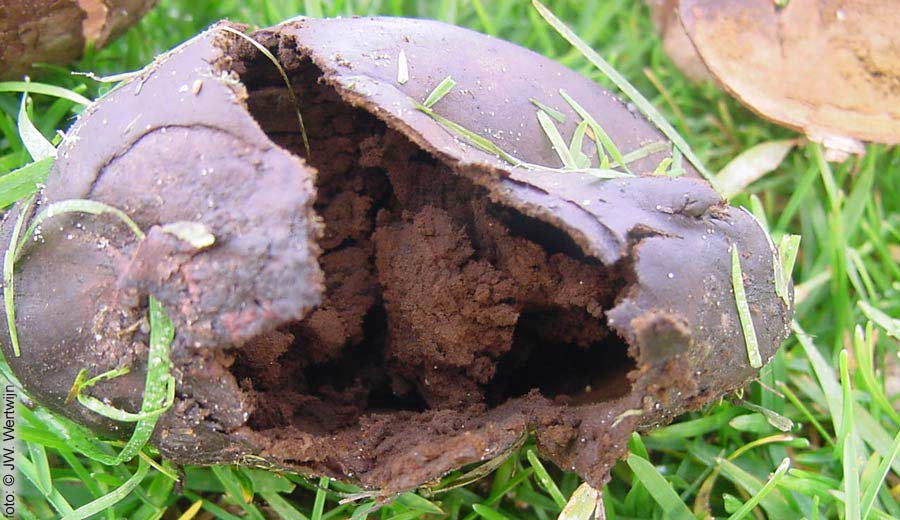
Leatherstar ( Mycenastrum corium )
|
|
Leatherstar ( Mycenastrum corium )
NMV study-week Zeeland, Vroongronden October 13 2001
NMV = Dutch Mycological Union
See: NMV Ga 220010
Leatherstar is very rare in the Netherlands.
Actually, it is strange that it is so rare. Leatherstar likes ruderal places,
at nitrogenous, calcareous sand (and clay), in a warm microclimate,
so leatherstars can be found in horse pastures, not at village dog's dung.
That kind of places we had in Diemen until our village ecologist
decided this pasture was not important for red list ring-snakes.
Nowadays it is the village tree-depot, which is after all more important than keeping
the theoretical chance of having a red list mushroom.
|
Taxonomy (morfological tree):
Leatherstar belongs to a stomach fungi genus Mycenastrum of the family
Leatherstarish (Mycenastraceae), from the Puffball Order Lycoperdales.
The Leatherstar Genus is a separate genus with thcik corky or leatherish endoperidium,
and a thin exoperidium. Leatherstar is the only leatherstar of this genus in Europe.
|
|
Leatherstar sometimes is grouped by earthstars or earthballs.
By earthstars because a dehisced Leatherstar has a star-shape, and by earthballs
because earthballs do have an leatherish outerskin. Leatherstar belongs to the puffball-family.
Eathstar-seekers and Earthball-seekers have a better chance to find
Leatherstars than people hunting for edible mushrooms.
|

Leatherstar seekers NMV study week Zeeland (oktober 2001):
guided by Leo M. Jalink through the Goeree dunal grassland vegetation
|
Mistakability:
- Young: Giant puffball
(has a soft endoperidium, remains white until it gets brown, and the endoperidium does not dehisc).
- Old: Mosaic puffball
(does no dehisc in star-shape, but looses its top, leaving a urn-shape on a stem).
|
Description:
Leatherstar has a globose (spherical) shape, with a diameter of 5-20 cm.
Leatherstar is fixed to the ground with a strong white rhizomorph (upto 1 mm).
Exoperidium: thin, floccose, white, soon disappearing.
Endoperidium: 2-3 mm, thick, hard, corky to leatherish, grey-brown, dehiscing by irregular radial lobes from above.
Gleba: olive- to reddish brown.
Mature spores: dark brown.
No: subgleba, balloon, (pseudo-)columella.
Season: Summer to autumn.
|
|
Literature:
Chrispijn, R. ed. (1999), Champignons in de Jordaan (De paddenstoelen van Amsterdam), Schuyt en Co, 162-163.
Gerhardt (2006), De grote Paddenstoelen Gids (voor onderweg), Tirion Natuur, 616.
Hansen, L & K. Knudsen (1997), Nordic Macromycetes, Kopenhagen, Vol 3, 345.
Jalink (1995), De aardsterren van Nederland en België, Coolia 38 supplement, 59-60.
Pegler, e.o. (1995), British puffballs, earthstars and stinkhorns, an account of the british gasteroid fungi, Royal Botanic Gardens, kew, 1995, 255 pp.
Vermeulen (1999), Paddestoelen, Schimmels en Slijmzwammen van Vlaanderen, Wielewaal, Turnhout, 541.
Photo mature Leatherstar with gleba, see Gerhardt (2006, 616).
|

Mycologists need content: spores, hyphes, fertile gleba, thats the drive they go for.
An emptied Leatherstar does not give so much pleasure in the long evenings at camp.
|
Top
|